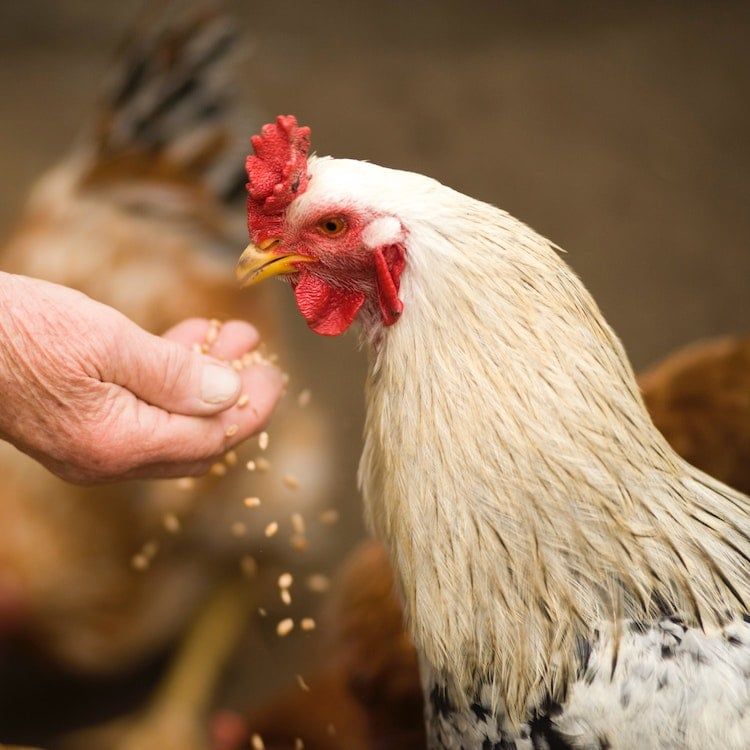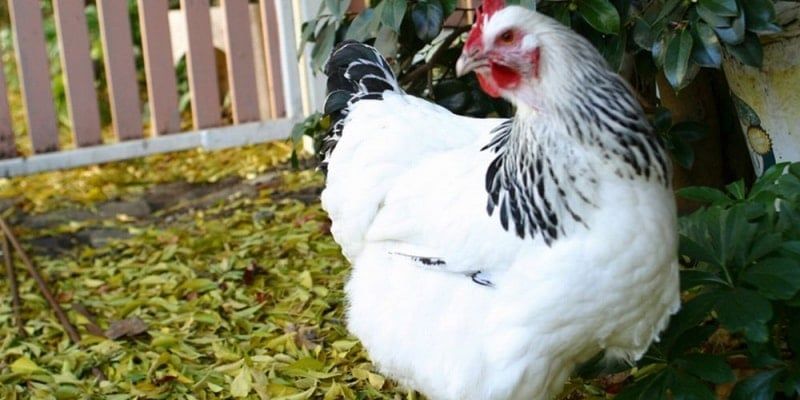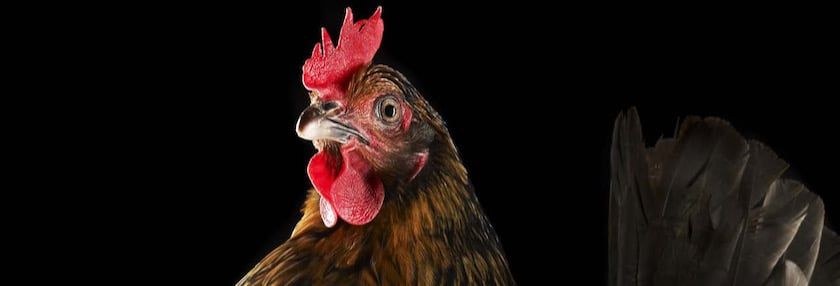Very Virulent Infectious Bursal Disease Virus


Infectious bursal disease (IBD), also known as Gumboro disease, is an acute, contagious viral infection that affects young chickens. IBD is characterized by subclinical—or unapparent—immunosuppression in chickens 3 weeks of age or older, and clinical—or apparent—disease in birds between 3 and 12 weeks of age.
The infectious bursal disease virus, IBDV, attacks the bursa of Fabricius, an organ near the cloaca that produces the immune cell type B-lymphocytes in sexually immature birds. The B-lymphocytes produced by the bursa are integral components of the immune system. In many ways, IBDV is the chicken equivalent of human immunodeficiency virus (HIV) in the way it attacks and disables the birds’ immune systems, making them susceptible to a variety of other avian diseases.
IBD is characterized by increased mortality, inflammation and atrophy of the bursa, and hemorrhages in skeletal muscle. Because of these effects, IBD is one of the major causes of loss of young chickens due to sickness, death, and immunosuppression. IBDV is considered endemic to the United States with vaccination being a common practice in certain commercial flocks.
How does “very virulent” differ from ��“normal” IBD?
In December 2008, a more virulent strain of IBDV, commonly referred to as “very virulent IBDV,” (vvIBDV) was identified in a commercial flock in Northern California. Since then, several other backyard and commercial facilities in California have had flocks affected by the same strain and other previously unknown strains of IBDV. More recently, in March 2014, a commercial layer flock in Washington State had a subtype of vvIBDV previously only seen in California.
Prior to the December 2008 findings, vvIBDV had never been identified in North America but has been described in Asia, Africa, Europe, and South America. Following the initial outbreak in 2008, California became the first state to undertake a voluntary surveillance effort to try to determine the geographical prevalence of vvIBDV. Based on data from 500 separate laboratory submissions, representing approximately 1500 birds from over 200 commercial and backyard facilities throughout the state, these unique strains appear to be limited to a few commercial flocks on the North Coast of California and significantly more backyard and specialty poultry flocks in Northern and Central California. Genetic sequencing of targeted regions of the virus has revealed four distinct types of vvIBDV in California and Washington State.
The Role of the Bursa of Fabricius
The bursa of Fabricius is a specialized organ near the cloaca that is unique to avian species and is responsible for producing some of the cells involved in a young bird’s immune response against pathogens. The bursa disappears after approximately 18 weeks of age.
Since the IBD virus specifically attacks the bursa, when the bursa disappears, the virus loses its “home.” While the virus has been identified in other parts of live chickens, it is believed to be in low, probably non-infectious levels. As a result, it is recommend that no selling or trading of birds under the age of 18 weeks should occur with properties that have or previously had flocks diagnosed with vvIBDV.
Signs of vvIBDV
Signs of vvIBDV are typically seen in chickens less than 12 weeks of age. The time from infection to the onset of clinical signs is short, usually two to three days. Affected birds may be depressed, have ruffled feathers, suffer from diarrhea with blood-stained vents, become recumbent, and ultimately may die. The morbidity—or sickness rate—has been reported to be as high as 80 percent. In California, the mortality, or death rate, has been reported to be high in layers (5 to 30 percent) with lower numbers in broiler chickens (less than 1 percent).
The lower rates in California may be related to the use of vaccines in commercial flocks. Additionally, the relatively lower mortality rates in broilers have been observed globally and are likely related to the different genetics of broilers as opposed to layers, much like a person might getting sick when the person next to them doesn’t, even though they were exposed to the same virus.
How does the virus spread?
Chickens 2 to 10 weeks of age that become infected with vvIBDV shed the virus in the feces. Viral shedding commences about 48 hours after infection and can continue for 14 to 16 days. Manure contaminated with the virus can be spread by people, equipment, water, and vehicles. There is no evidence to suggest that vvIBDV is transmitted from parent to offspring in the egg.
While vvIBDV has been noted in avian wildlife in other countries, contact with avian wildlife in North America is not currently believed to be a primary source of disease spread. The virus is extremely resistant to any type of cleaning and disinfection, which, combined with poor biosecurity measures and other high-risk behaviors by backyard poultry owners, is thought to contribute to the spread of wwIBDV from flock to flock.
One such high risk behavior recently identified in California is the use of online “web trading,” where people unknowingly buy and sell poultry from suspect sources.
Composting of litter material does not appear to kill the virus. In one broiler facility that uses windrows and composts between the flocks, the virus has reappeared multiple times.
Treatment
Like many avian diseases, no drugs have been shown to reduce clinical signs or pathological changes associated with vvIBDV.
Prevention
Due to lack of treatment and because this virus is so resistant to cleaning and disinfecting, the best course of action is to prevent the virus from ever making it onto your farm or into your birds in the first place. This can be done by adhering to strict biosecurity practices.
For prevention of vvIBDV, purchase chicks from commercial hatcheries—or feed-stores that purchase their chickens from commercial hatcheries—that are part of the National Poultry Improvement Program (NPIP). NPIP-certified hatcheries don’t do active surveillance against vvIBDV or IBDV, but their biosecurity standards are helpful in preventing avian diseases nonetheless. At the minimum, you’ll receive chicks that are monitored for multiple diseases including avian influenza, mycoplasma, and Salmonella.
Vaccination appears to have benefits in mitigating mortality. With the low cost of vaccination, it may be beneficial to vaccinate flocks that are geographically close to facilities that have tested positive for IBDV or vvIBDV. However, getting access and using IBDV vaccines for non-commercial applications is challenging and not often practical.
The solution: work with your hatchery. Ask them to include IBD vaccines with their vaccination program. While there isn’t currently a vaccine against vvIBDV, the IBDV vaccine offers some protection. It’s not perfect; your birds can still be susceptible to IBD and vvIBD, but it can help. If unprotected, vvIBDV could kill half of an immature flock and leave the survivors more susceptible to other diseases.
Simple things can help stop the spread, too. For example, don’t take chickens to auction, exhibits, fairs, or shows if they are are less than 17 weeks of age and you have a history of deaths in the flock with diarrhea.
How You Can Help Researchers
While IBDV is endemic to the United States, vvIBDV and its subtypes are more difficult to manage and pose a new threat to poultry health. In order to identify these new strains, you must actively look for them. Therefore, we need to expand our surveillance for vvIBDV throughout the U.S.
If you suspect that your birds may have vvIBDV based upon the clinical signs described above, contact your veterinarian or your state’s diagnostic laboratory, which may do diagnostic work for free. Here in California, you can also contact me through UC Davis at mepitesky@ucdavis.edu regarding potential submissions to California.
Chickens that exhibit the typical signs or have died within the past 24 hours are preferred for laboratory diagnosis. Although currently the only diagnostic test is post mortem, UC Davis is looking into live-testing options.
The recovery and treatment of diseases can be a lengthy process, taking steps to prevent an outbreak could save you time and money. Learn more about biosecurity here.
Tags:Pitesky's Poultry

Chicken Whisperer is part of the Catalyst Communications Network publication family.











